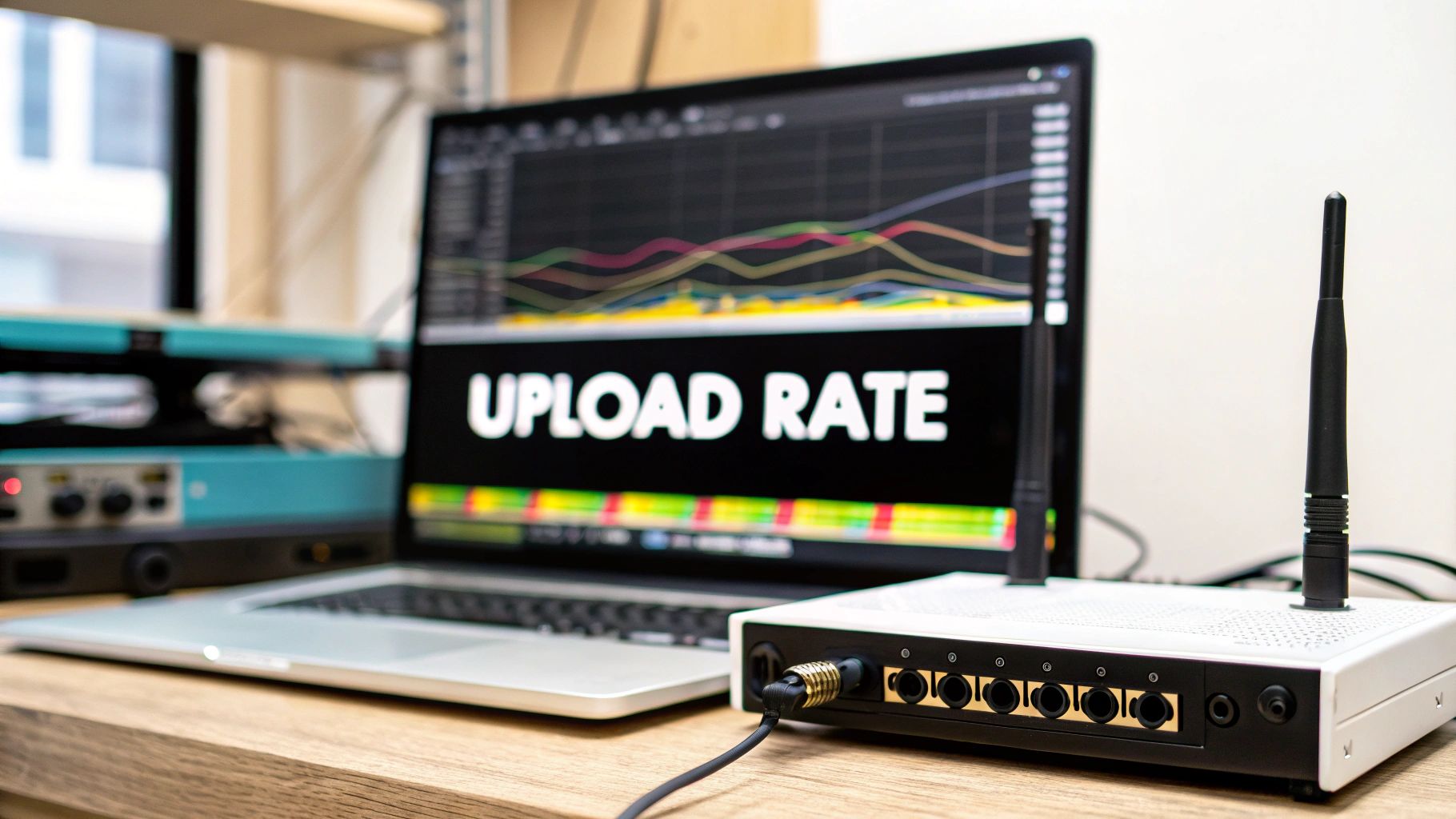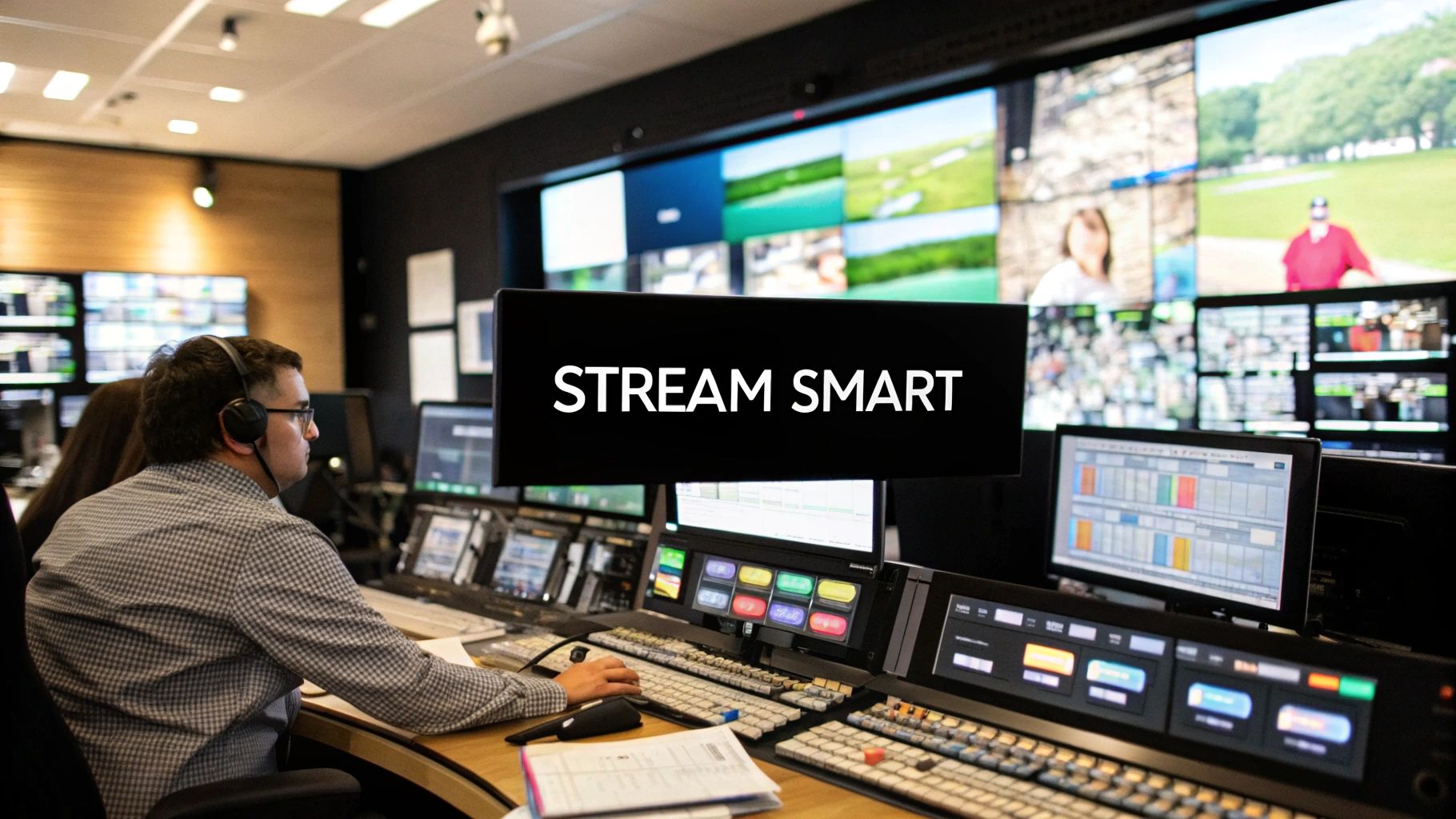So, what exactly is DRM? Think of Digital Rights Management (DRM) as the digital bouncer for your online content. It’s a whole system built to protect things like movies, music, and software from being copied and passed around illegally, making sure only paying customers get through the door.
The Guardian of Digital Content
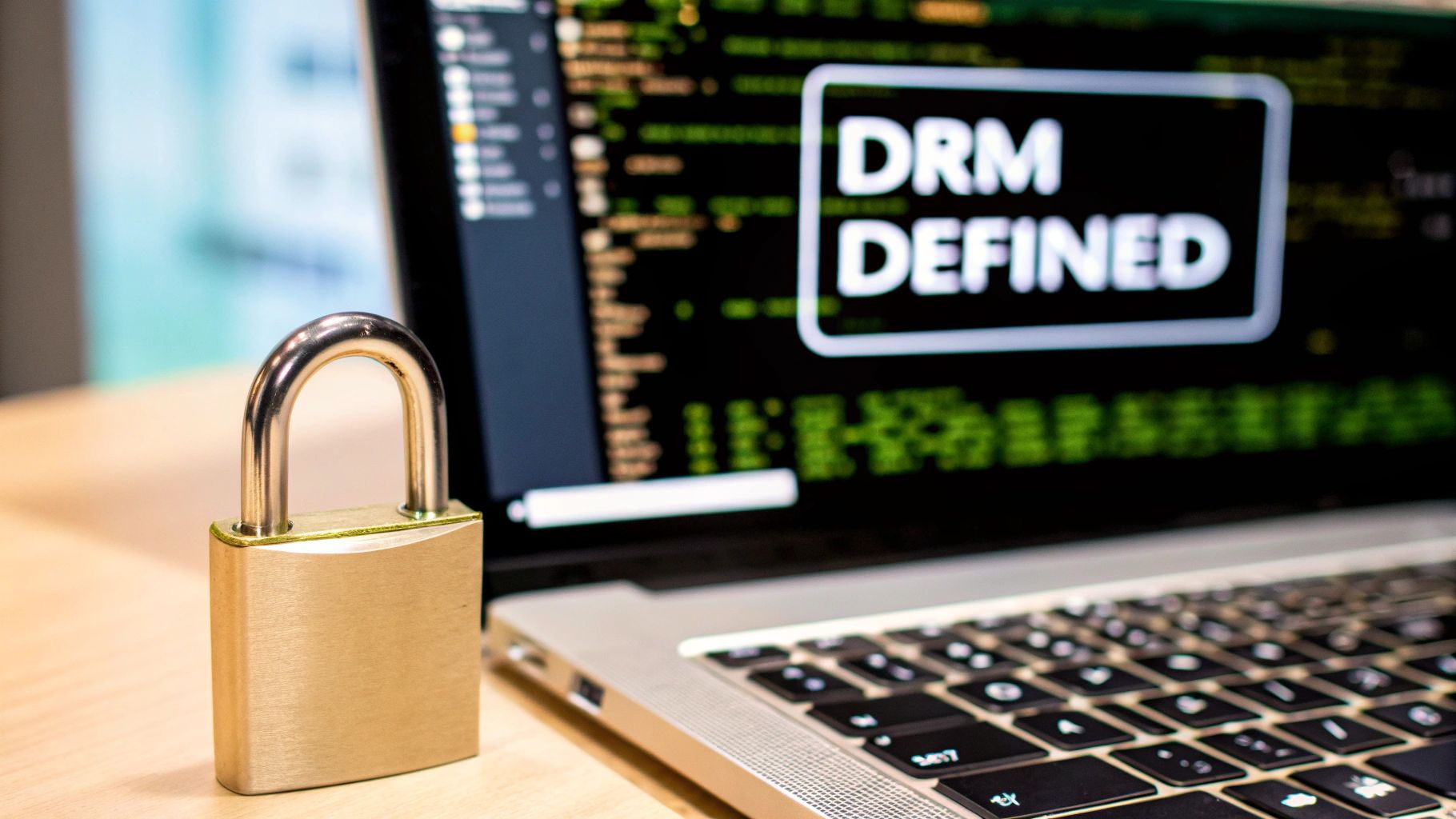
Here’s a simple way to look at it. When you buy a Blu-ray disc, you own that physical object. But when you stream a movie on a platform like Netflix or Hulu, what you’re really doing is renting it. DRM is the tech that enforces the terms of that rental, stopping you from just downloading the file and sending it to all your friends.
Honestly, without DRM, the subscription services we all use just couldn’t exist. Piracy would be out of control, and it would be nearly impossible for creators and distributors to make any money from their work. This technology is the invisible framework holding up the entire digital media industry.
Why Content Creators Can’t Live Without It
If you’re in the business of creating or distributing digital media, you need to get familiar with DRM. It’s not just some abstract security protocol; it’s the key to building a viable business when anyone can copy a file with a single click.
DRM is what gives you:
- Revenue Protection: It stops unauthorized sharing right in its tracks, so creators and platforms can actually get paid for their content through subscriptions, sales, or rentals.
- Access Control: You get to decide exactly who can watch your content, on what devices, and for how long. It puts the power back in your hands.
- Content Integrity: For services that rely on exclusive libraries to attract subscribers, DRM is essential for protecting the value and exclusivity of that premium content.
In a nutshell, DRM is the bedrock technology that allows the digital content economy to work. It strikes a balance between giving users easy access and protecting the creator’s intellectual property.
How DRM Technology Actually Works
To really get what DRM is doing behind the scenes, picture it as a super-fast, coordinated digital handshake. It’s not a single piece of software but a whole system working together to confirm that a viewer is actually allowed to watch something. All of this happens in the blink of an eye, usually in less than a second.
The process kicks off with encryption. Before a video file even leaves the server, it’s scrambled using a powerful cryptographic algorithm. Think of it like putting a valuable letter into a high-tech safe before you mail it. Even if someone intercepts the package, they can’t read what’s inside without the unique key. This is why you can’t just download a video from a streaming service and watch it on any old player. You can learn more about how video files are prepared for streaming in our guide on what is video transcoding.
The License and Key Exchange
So, the encrypted content arrives on your device, but your video player can’t do anything with it yet. It’s locked tight. To open it, the player has to ask for a special digital “key.” This is where the license server steps in, acting as the ultimate gatekeeper.
Your player sends a request to this server, which then starts checking your credentials. Are you a paid subscriber? Are you in a region where the content is available? Have you hit your device limit? If everything looks good, the server generates a license that contains the decryption key. That key is sent securely back to your player, which can finally unlock the video and press play.
This entire workflow—from request to playback—is designed to make sure only authorized viewers get access.
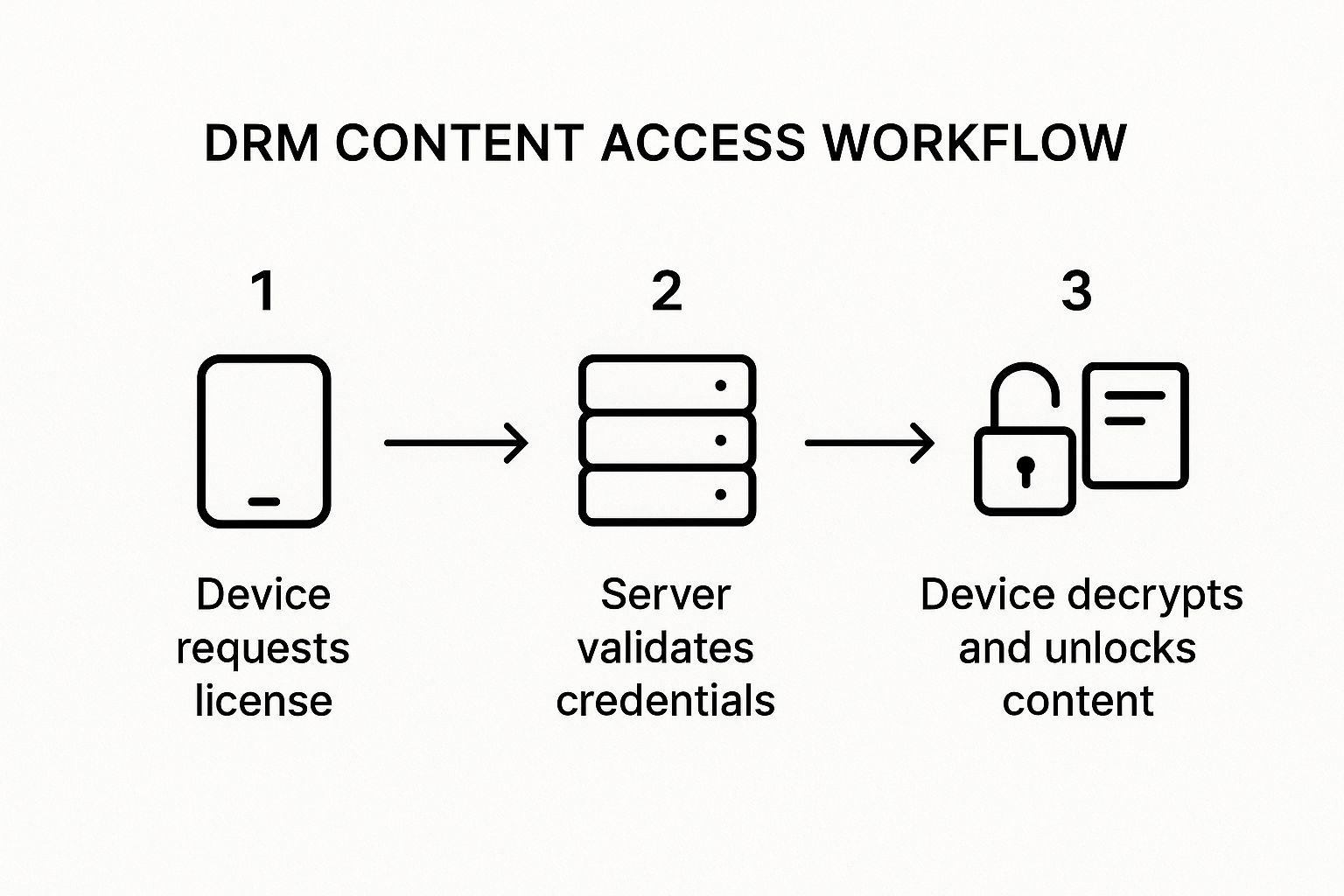
As you can see, it’s a constant loop of requesting, validating, and decrypting. This ensures that the content creator’s rules are followed, protecting their work from piracy and unauthorized sharing. At its heart, DRM is all about controlling access.
The Core Principle of DRM: The content and the key to unlock it are always kept separate. The key is only provided after the user and their device have been successfully authenticated, ensuring a secure and controlled viewing experience.
The Most Common DRM Systems Explained
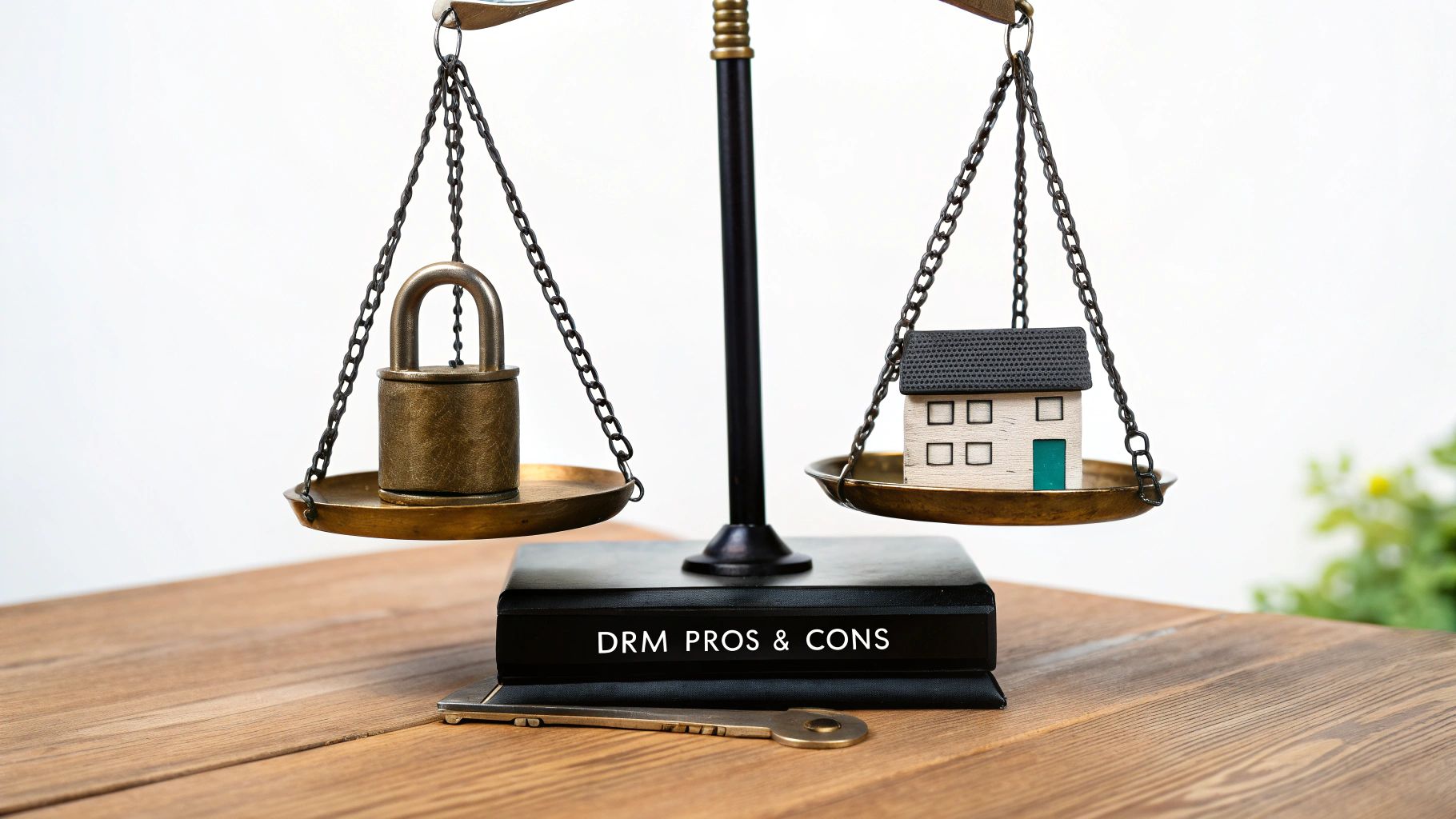
The world of DRM isn’t a wild west of competing technologies. Instead, it’s dominated by three major players, each backed by a tech giant. Understanding who they are and what they do is crucial to figuring out why a video plays perfectly on your phone but stutters on your laptop.
Think of it like international travel. You can’t just plug your US-made hair dryer into a European wall socket; you need the right adapter. DRM systems are like those adapters. A content provider needs to pack the right one for every “country” or device ecosystem to ensure their video plays for every single viewer.
The Big Three of DRM
These three systems aren’t really in direct competition. They’ve each carved out their own territory, designed to work flawlessly within their native hardware and software environments.
- Google Widevine: This is probably the most common DRM you’ll encounter. It’s the security backbone for content on Android devices, Google Chrome, Firefox, and a massive range of smart TVs and streaming boxes. If you’re aiming for a global audience, Widevine is non-negotiable.
- Apple FairPlay: No surprises here—this is Apple’s proprietary system. FairPlay is the only way to securely deliver video to iPhones, iPads, Macs (in Safari), and Apple TV. It’s the gatekeeper to the entire Apple ecosystem.
- Microsoft PlayReady: Microsoft’s solution is a versatile workhorse. You’ll find PlayReady protecting content on Windows devices, Xbox consoles, and many smart TVs from manufacturers like Samsung and LG. It’s known for being robust and flexible.
Comparison of Major DRM Technologies
Because no single DRM can unlock every device, a multi-DRM strategy has become the gold standard for any serious streaming service. Here’s a quick breakdown of how the big three stack up against each other.
| DRM System | Primary Developer | Supported Platforms | Key Feature |
|---|---|---|---|
| Google Widevine | Android, Chrome, Firefox, Edge, Smart TVs | Broadest reach across open platforms and browsers. | |
| Apple FairPlay | Apple | iOS, iPadOS, macOS (Safari), tvOS | The exclusive solution for the entire Apple ecosystem. |
| Microsoft PlayReady | Microsoft | Windows, Xbox, Edge, various Smart TVs | Highly versatile with extensive hardware-level support. |
Ultimately, to provide a seamless viewing experience, you need to prepare your video content to work with all three systems. This ensures that no matter what device someone uses, they can hit play without a hitch. You can learn more about how to set up DRM for video in our in-depth guide.
Key Takeaway: Going with just one DRM system is a recipe for disaster. If you only support Widevine, for example, you’ve instantly locked out every single person using an iPhone, iPad, or MacBook. No streaming service can afford to ignore a market segment that large.
Real-World Examples of DRM in Action
You probably interact with Digital Rights Management every single day, even if you don’t realize it. It’s the hidden technology working behind the scenes of many of your favorite services, especially in the world of video streaming.
Think about the last time you watched a movie on Netflix or Disney+. When you hit play, DRM is the invisible security guard that checks your subscription status. Once it confirms you’re a paying customer, it issues a temporary “pass”—a license—that allows your specific device to decrypt and play the video. This is exactly why you can’t just screen-record a movie on your laptop; the DRM is designed to block that kind of activity to combat piracy. It’s the core technology that makes the entire subscription video model work.
It’s Not Just About Movies
But DRM isn’t limited to your evening entertainment. Its role in protecting digital content pops up in a lot of different places.
- Digital Textbooks: Publishers often use DRM to control how students access expensive e-textbooks. This might mean limiting the number of devices the book can be installed on or setting an expiration date for access.
- Software Licensing: Ever entered a license key to activate a program like Adobe Photoshop or Microsoft Office? That’s DRM in action. It verifies that you have a legitimate, paid copy and prevents that same key from being used on endless other computers.
- Video Games: PC gaming platforms like Steam are built on DRM. When you buy a game, it’s tied directly to your account, stopping people from simply copying the game files and giving them away for free.
The market for this technology has grown substantially, especially where intellectual property laws are taken seriously. North America is the biggest player right now, with a DRM market size of USD 2.04 billion in 2024, largely because of the huge number of OTT platforms and strong copyright protection. You can find more details about this trend in the DRM market growth report on cognitivemarketresearch.com.
Key Insight: From streaming media using protocols like HLS to accessing your work software, DRM is the underlying technology that enables secure business models in the digital economy.
DRM and streaming protocols are two sides of the same coin. To get a better sense of how they work together, take a look at our guide on what is HTTP Live Streaming.
The Economic Importance of DRM
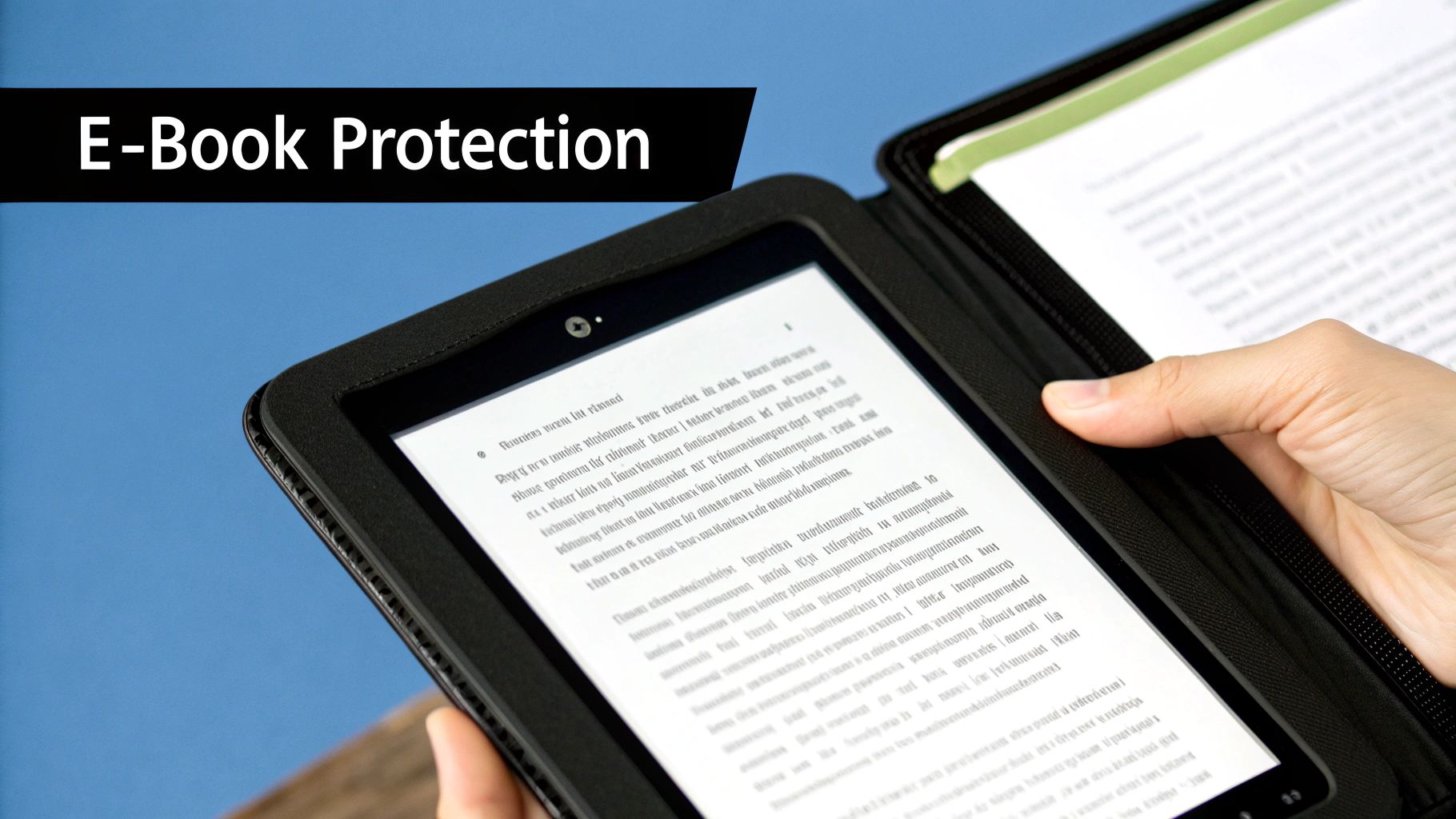
To really understand why DRM matters so much, you have to look beyond the code and see the bigger business picture. Think of DRM not just as a security measure, but as the very foundation of the entire digital content economy. It’s what makes the subscription models we all use—from streaming our favorite shows to listening to music playlists—actually work.
Without a solid way to control access to digital content, these business models would simply fall apart. Piracy would run rampant, turning carefully crafted assets into a free-for-all that drains value from the system. By protecting revenue, DRM ensures creators and distributors have a reason to keep making the high-quality content we love.
Protecting Against Digital Piracy
The financial hit from illegal content sharing is enormous. This isn’t just a small leak; it’s a massive, global problem that directly threatens the livelihoods of people in creative industries. Good DRM is the first line of defense against these crippling losses.
The sheer scale of digital piracy highlights just how essential DRM technologies are. Insights related to the World Intellectual Property Organization (WIPO) show that digital piracy costs the global economy over USD 200 billion every single year. You can learn more about the growing need for these tools in reports on the digital rights management market on market.us.
That number alone makes it clear why strong protection isn’t just a “nice-to-have.” As our lives and entertainment shift more and more online, the need for effective DRM only grows, making sure the digital marketplace can stay fair and profitable for creators.
Got Questions About DRM? We’ve Got Answers.
Even after you’ve got the basics down, a few questions about Digital Rights Management tend to pop up again and again. Let’s tackle some of the most common ones to give you a clearer picture of how DRM really works for creators and viewers.
Is DRM the Same as Copyright?
This is a big one. While they’re related, they are definitely not the same thing. Copyright is the legal concept—it’s the right you have as a creator that says you own your work. DRM, on the other hand, is the technology that enforces those rights in the digital world.
Here’s a simple way to think about it: Copyright is the deed to your house, legally proving you own it. DRM is the sophisticated lock on the door that controls who gets in. One is the legal claim, the other is the technical enforcement.
Why Do I Need More Than One DRM System?
Another frequent question is why a single DRM solution won’t cut it. The goal of any good DRM setup is to be completely invisible to the paying customer—the entire process should happen in the blink of an eye. But to make that smooth experience happen everywhere, you need a multi-DRM strategy.
It all comes down to the simple fact that different devices and browsers support different DRM technologies.
- Browser and OS Support: An iPhone using Safari needs Apple’s FairPlay. A viewer on a laptop using Chrome or Firefox needs Google’s Widevine. A Microsoft Edge browser or Xbox console relies on Microsoft’s PlayReady.
- Reaching Everyone: If you only support one system, you’re essentially telling a huge portion of your potential audience they can’t watch your content.
- The Bottom Line: To securely stream to every screen—laptops, phones, tablets, and smart TVs—you absolutely need to support all the major DRM systems.
Can DRM Be Broken?
Let’s be realistic: no security system is 100% foolproof forever. However, modern DRM technologies from giants like Apple, Google, and Microsoft are incredibly robust and constantly being updated. These companies have teams dedicated to closing loopholes and staying ahead of bad actors.
Breaking today’s DRM isn’t just a massive technical challenge; it’s also illegal in many parts of the world. In the United States, for instance, the Digital Millennium Copyright Act (DMCA) makes it a federal crime to circumvent these kinds of protection measures.
Ready to protect your video content with a seamless, developer-friendly solution? LiveAPI offers robust, multi-DRM protection that integrates easily into your applications, ensuring your content is secure on any device. Learn more and get started today at https://liveapi.com.





